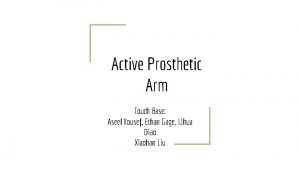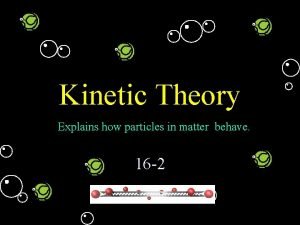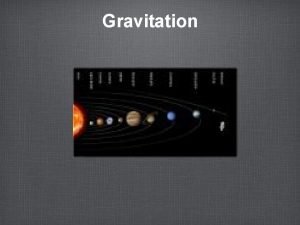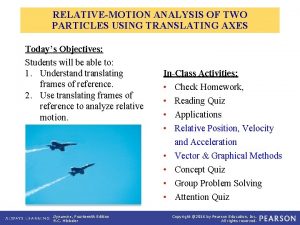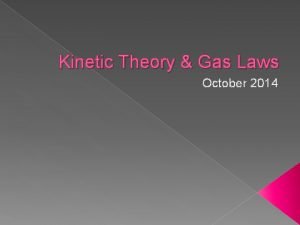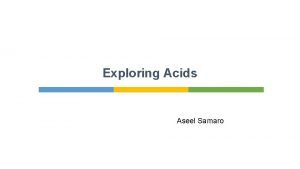Using particles to explain matter Aseel Samaro Introduction






















- Slides: 22

Using particles to explain matter Aseel Samaro



Introduction § Have you ever wondered why it is possible to put your hand through a liquid such as water, or a gas, such as air, but not through a solid wooden door? § The answer lies in how the particles are arranged in these states of matter.

General properties of solids § Anything that takes up space and mass is called ‘matter’. § All matter is made from particles. § Particles vary in the ways they are arranged and behave. § These are known as different states of matter.

This figure shows how particles are arranged in the three most common states of matter § Solid – particles are in fixed, regular positions. § Liquid – particles are close together and touching. They can move from their position. § Gas – particles have no fixed position and are far away from each other. They can move very fast.

Name three solids, three liquids and three gases you are familiar with. Describe how the arrangements of particles in solids, liquids and gases differ from each other.

WORKSHEET


Particles and internal energy § All particles above the temperature known as absolute zero (– 273 °C) have internal energy. § Particles in solids, liquids and gases have different amounts of energy. § In solids the particles vibrate in their fixed positions. § Particles in liquids can move slowly from their positions, but are always in contact with other particles. § Particles in a gas move about very fast, colliding with other particles.

§ Temperature affects how fast particles move. § At higher temperatures, particles in a solid vibrate faster, while in liquids and gases particles move around faster.

Draw a cartoon to describe how the energies of the particles in solids, liquids and gases vary. In which of the following do the particles have the most internal energy – ice, oxygen at room temperature or steam (over 100 °C)?

Intermolecular forces § The particles in a solid have very strong, attractive intermolecular forces between them, which hold the particles in their positions. § Between particles in liquids, the intermolecular forces are still strong, but not as strong as in a solid. § This is why the particles are able to move about. The intermolecular forces between the particles of a gas are very weak.


§ Some solids, like metals, have very strong intermolecular forces between the particles – others, like paper, are not nearly as strong. Forces between particles can be represented by springs.

Use ideas about intermolecular forces to explain why you can put your hand through air but not through wood. What can you say about the intermolecular forces between the particles of jelly compared with those of a metal?

Describe the relationship between the energy of the particles and the intermolecular forces holding them together. What do you think is in between the particles of a gas?


Did you know…? § The most common state of matter in the Universe is called ‘plasma’. § It is known as the fourth state of matter, and is a form of gas. § The Sun and space are made of plasma. § We can make tools from plasma to cut strong metals.

https: //www. youtube. com/watch? v=C 33 Wd. I 64 Fi. Y

Homework

Thank you
 How to identify pure aseel
How to identify pure aseel Aseel yousef
Aseel yousef Lab samaro
Lab samaro What are stomata
What are stomata Lab samaro
Lab samaro Samaro property
Samaro property An explanation of how particles in matter behave
An explanation of how particles in matter behave Building block of matter which contains subatomic particles
Building block of matter which contains subatomic particles Mutual force
Mutual force Relative motion of two particles using translating axes
Relative motion of two particles using translating axes Classification of matter section 1 composition of matter
Classification of matter section 1 composition of matter Koosha golmohammadi
Koosha golmohammadi Composition of matter section 1
Composition of matter section 1 Chapter 2 section 1 classifying matter answers
Chapter 2 section 1 classifying matter answers Median and lateral apertures
Median and lateral apertures Section 1 composition of matter chapter 15 answer key
Section 1 composition of matter chapter 15 answer key Gray matter and white matter
Gray matter and white matter What is grey and white matter
What is grey and white matter Ecological succession
Ecological succession Particle model dissolving
Particle model dissolving Kinetic particle theory
Kinetic particle theory Hot air balloon charles law
Hot air balloon charles law System collections generic
System collections generic

